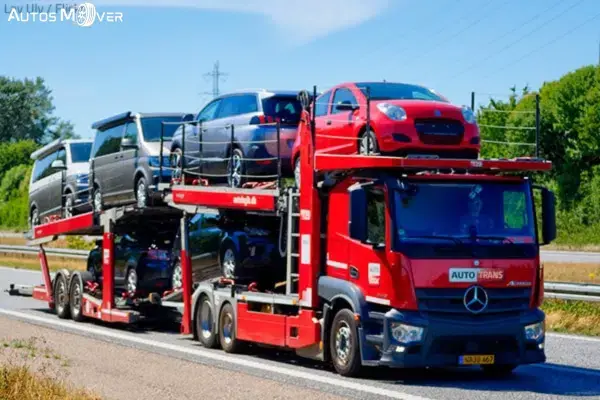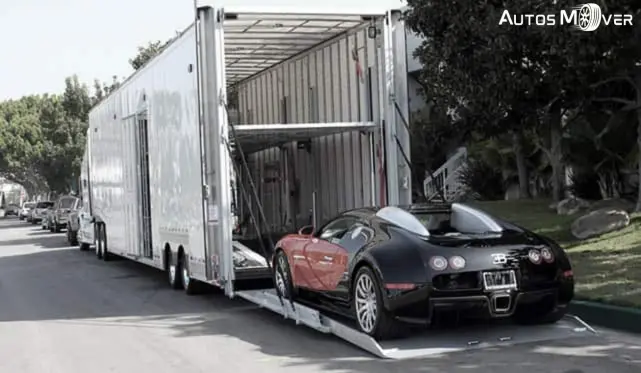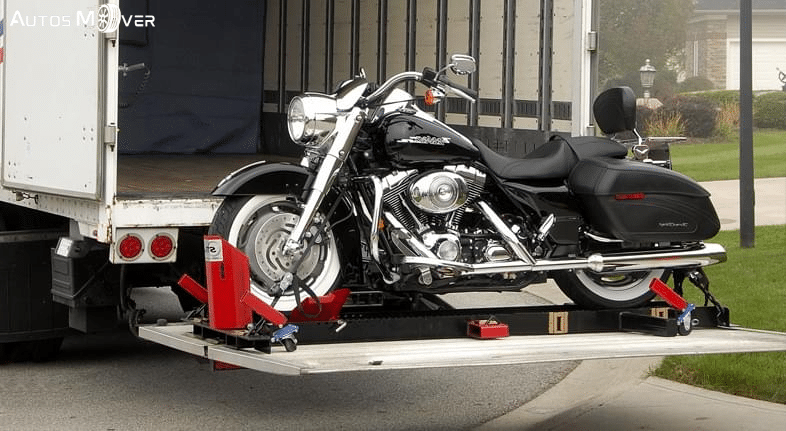
Relocating your car across the country can be stressful-unfamiliar truckers, confusing quotes, and hidden risks make it overwhelming. At AutosMover.com, we focus on transparency and reliability over just the lowest price.
This guide shows you how to evaluate shipping options, understand real car shipping cost, and reduce risks-so your cross-country car shipping is smooth, predictable, and safe.
1.What Is Cross Country Car Shipping?
Cross country car shipping is the process of transporting a vehicle from one side of the United States to the other using professional auto transport services.
Instead of driving thousands of miles yourself, you hire a licensed carrier (often arranged through a broker) to safely move your car on a transport truck.
2. Broker vs. Carrier: Your First Choice in Car Shipping
The biggest decision in car shipping is whether to go through an auto transport broker or hire a direct carrier. This choice shapes your pricing, flexibility, and overall experience.
The Key Difference
Most “cross country car shipping” quotes come from brokers. Understanding their role helps set the right expectations.
Auto Transport Broker
- Licensed middleman connecting your vehicle with a carrier from a large network.
- Flexibility: High-can quickly rebook if a carrier cancels.
- Pricing: Excellent for competitive, negotiable rates.
- Best For: Most cross-country moves. Choose brokers with strong FMCSA records and reliable pricing history.
Direct Car Carrier
- Owns the truck, employs the driver, and physically ships your vehicle.
- Flexibility: Low-if they cancel, you must restart the process.
- Pricing: Best when you want direct accountability or specialized transport.
- Best For: Short-distance moves, non-running vehicles, or classic cars.
Red Flags in Car Shipping Quotes
- Ultra-Low Price: $200–$300 lower than others usually signals a bait-and-switch. Expect a later price hike.
- Full Upfront Payment: Trusted companies only take a small deposit; the rest is due on delivery.
3. How Much to Ship a Car Cross Country
The final number for how much to ship a car cross country is not static. The rate is a fluid figure determined by five dynamic factors, driven by real-time logistics and supply chain variables.
The Supply and Demand Dynamic (Seasonal Pricing)
The price you pay is the rate required to entice a carrier to take your load at a specific time.
- Peak Demand: Prices soar during the high summer moving season (May–August) and the major Snowbird migrations (North-to-South in fall; South-to-North in spring).
- The Cheapest Month to Ship a Car: The lowest rates are generally found during February and October-the shoulder months between major population movements. Scheduling during these windows is the single cheapest way to ship a car cross country.
- Route Popularity: Shipping between major metro areas is typically cheaper per mile. Routes to or from remote, rural locations require longer detours for the driver, increasing the car shipping cost.
Carrier Type and Vehicle Specifics
This choice between open and enclosed transport significantly impacts your vehicle transport expenses.
- Open Car Transport: Most common and affordable. Vehicles are exposed to the elements. Suitable for daily drivers.
- Enclosed Car Transport: Premium service providing full protection from the elements. Essential for classic, luxury, or exotic cars. Expect to pay 40% to 60% more for this protection.
- Inoperability Surcharge: If your car is inoperable, a surcharge ($150–$300) will apply because specialized equipment and extra labor are required for loading.
4. Risk Mitigation: Pre-Shipment Checklist
- Clean & Inspect: Wash your car to spot all existing damage.
- Photograph Everything: Take clear, time-stamped photos and videos.
- Bill of Lading (BOL): Do a walk-around with the driver, confirm damage notes, and keep a photo of the signed BOL.
- Prep the Vehicle: Leave ¼ fuel, remove valuables, disable alarms, fold mirrors, and remove toll tags or accessories.
5. Timing & Tracking: Managing Expectations
- Pickup/Delivery Window: Expect a 3–5 day window, not exact times. Delays can happen due to traffic, weather, or rest breaks.
- Tracking: Rely on direct contact with the driver for updates—more accurate than apps.
- Be Available: You or a representative must be present to sign the BOL to avoid delays or storage fees.
FAQs about Vehicle Transport Services
What is the cheapest way to transport a car cross country?
The cheapest way is almost always to use open car transport and book during the off-peak seasons of February or October. Additionally, being flexible with your pickup dates (allowing a 5-day window) incentivizes carriers and lowers the price.
What is the best company to ship cars cross country?
The “best” company is one that balances competitive pricing with verifiable credentials. Look for companies with high marks for customer service, but always verify their license and the carrier’s insurance coverage yourself before booking.
What month is the cheapest to ship a car?
February and October generally offer the lowest rates. February falls after the winter holiday rush and before the spring moving season begins, while October is after the summer rush and before the “Snowbird” migration peaks.
What documentation do I need before shipping?
You’ll typically need your vehicle title/registration, a government ID, proof of insurance, and any lienholder authorization if the vehicle is financed. Photograph and document existing damage. If crossing borders, include customs or import/export paperwork.
Is it cheaper to drive my car or use professional car shipping services?
For distances over 1,500 miles, shipping a car is often comparable to or even cheaper than driving it yourself when you factor in all the hidden costs of a road trip: gas, lodging (multiple nights), meals, the cost of the driver’s time, and the inevitable wear-and-tear/mileage added to your vehicle.
Final Words
Shipping a vehicle cross country is a complex logistical task, but it doesn’t have to be intimidating. By viewing the process through an expert lens-understanding the fluid car shipping cost market, selecting your partner strategically, and employing detailed risk mitigation steps-you take control of the transaction.
Your vehicle is a valuable asset; treat its transport with the strategic planning it deserves. By following this framework, you ensure your car arrives safely, on time, and without unexpected costs.





